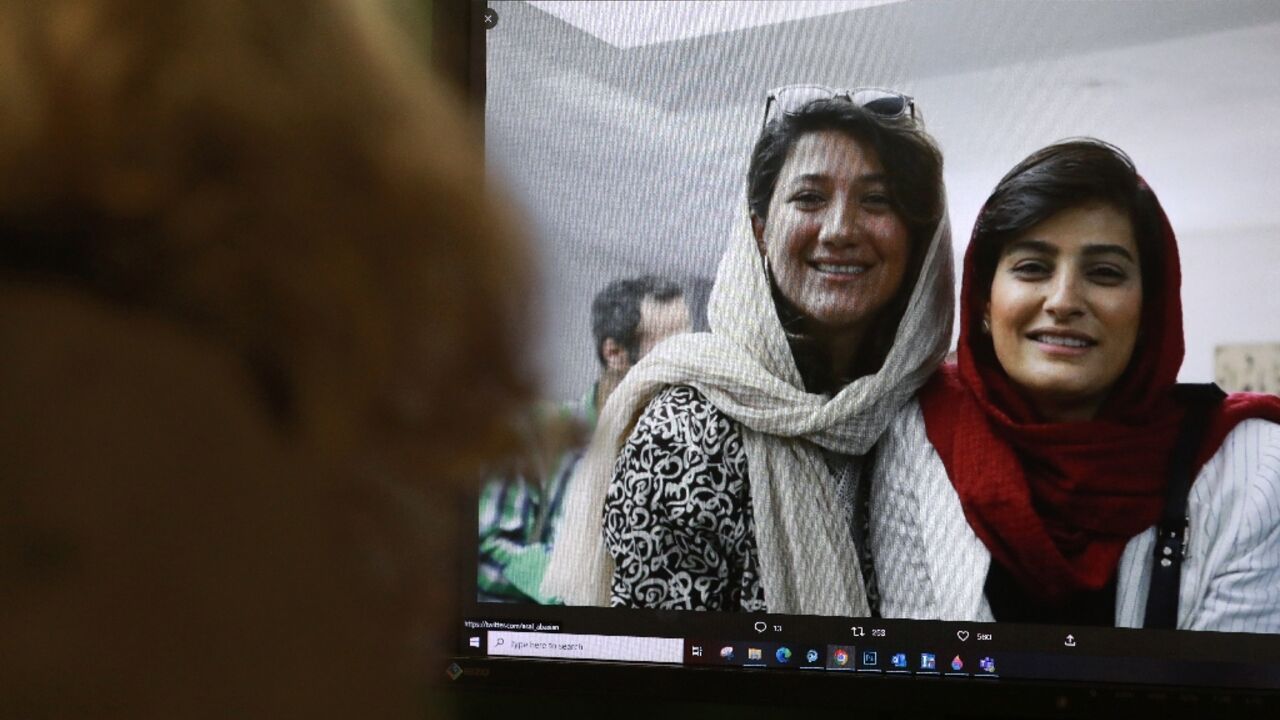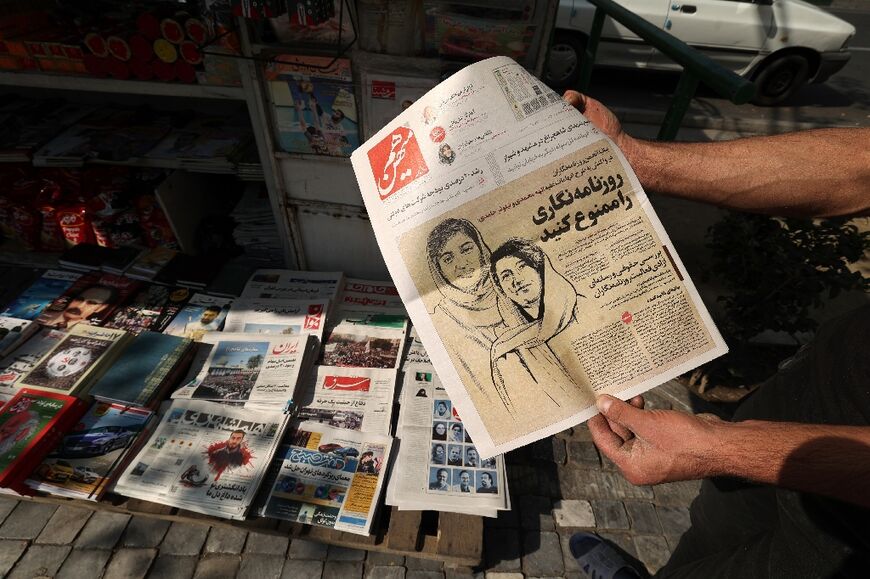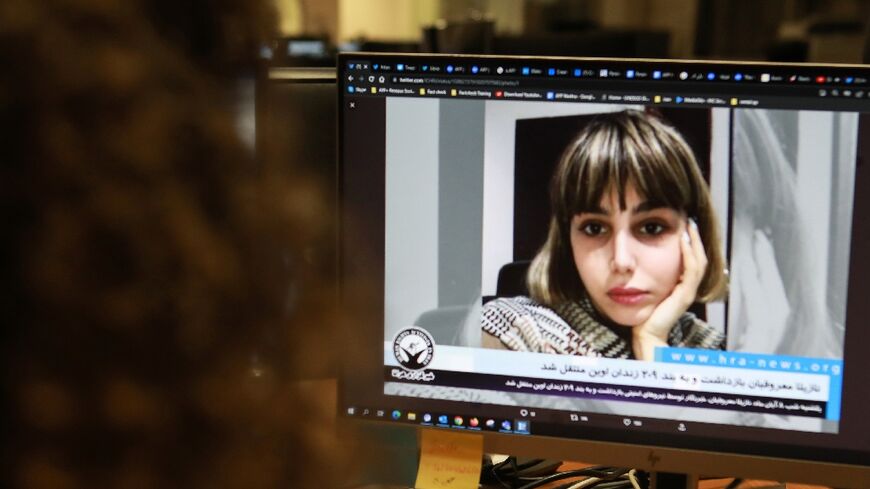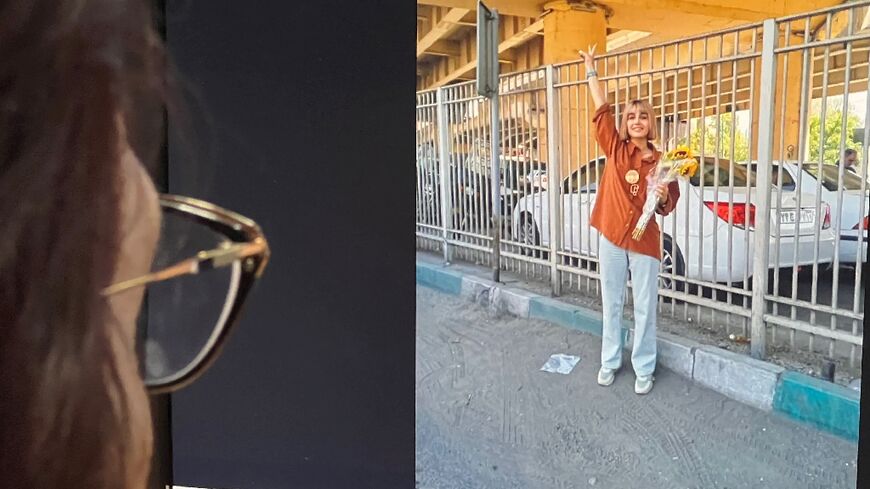Alarm grows for jailed Iran reporters who exposed Amini case

Concern is growing for two jailed Iranian reporters who helped focus attention on the death of Mahsa Amini but who activists allege are now the targets of a smear campaign portraying them as spies.
Niloufar Hamedi and Elahe Mohammadi were detained in the initial phase of protests that erupted after Amini died following her arrest by Iran's morality police. The movement now poses the biggest challenge to the authorities since the 1979 revolution.
Hamedi reported for Iran's Shargh newspaper from the hospital where the young woman languished in a coma for three days before she died. The journalist was arrested on September 20, her family has said.
Mohammadi, a reporter for the Ham Mihan newspaper, went to Amini's hometown of Saqez in northwest Iran's Kurdistan region to report on her funeral, which turned into one of the first protest actions. She was detained on September 29.
Both women remain in custody in Tehran's Evin prison, according to social media posts by their families.
They are among 51 journalists who have been detained in a mass crackdown since the protests erupted, according to the New York-based Committee to Protect Journalists (CPJ). Just 14 are confirmed to have been released on bail.
- 'Witch hunt' -
The New York-based Center for Human Rights in Iran (CHRI) said in a statement that it was "deeply concerned" over the situation of the two women.
They are "being detained without access to internationally recognised standards of due process" and "could face years of imprisonment if convicted", it said.
Iranian intelligence authorities last week accused the pair of being foreign agents whose status as journalists was "cover".
A statement claimed the women had undergone foreign training programmes and through their reporting had sought to incite Amini's family and the protests that erupted after her funeral.
"The two were the first sources for fabricating this news for foreign media," the statement said.
The CHRI said the statement was "filled with unsubstantiated claims" including a false allegation that Hamedi had published a photo of Amini on Twitter that went viral.
"This witch hunt is a cowardly attempt by the Islamic republic to pin its many failures on two women journalists, to deflect attention from the repressive policies that gave birth to the country's organic and growing protest movement," said CHRI executive director Hadi Ghaemi.
- 'Critical moment' -
"The Islamic republic expects the world to turn its attention away from the deadly repression of the protests so that it can kill, maim, detain, and smear innocent people like these women with impunity," Ghaemi added.
The CPJ said the intelligence agencies' statement meant the two women could "face the death penalty if formally charged and convicted of espionage".
The arrest of reporters has also caused controversy inside Iran.
On Sunday, more than 300 Iranian journalists and photojournalists signed a statement criticising authorities for "arresting colleagues and stripping them of their civil rights after their detentions".
In a statement published in the Etemad newspaper, the Tehran journalists' association dismissed the "security approach" as "illegal" and "in conflict with press freedom".
But Iman Shamsai, the culture ministry's director general of local media, said "no one has been arrested in Tehran for media activity", the ISNA news agency reported.
CPJ President Jodie Ginsberg said Iranian authorities were "trying to silence a critical moment in the country's history".
Iran has become "among the world's top jailers of journalists in an astonishingly short time", she added.
"Iranian authorities should free all detained journalists immediately and unconditionally."





